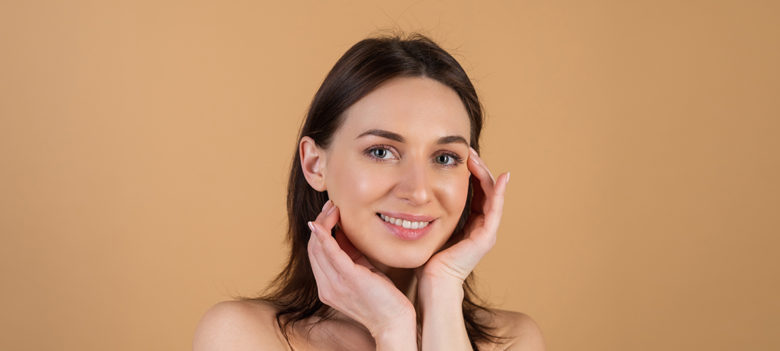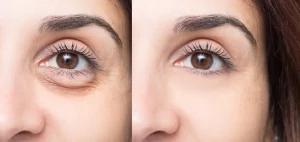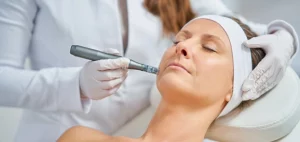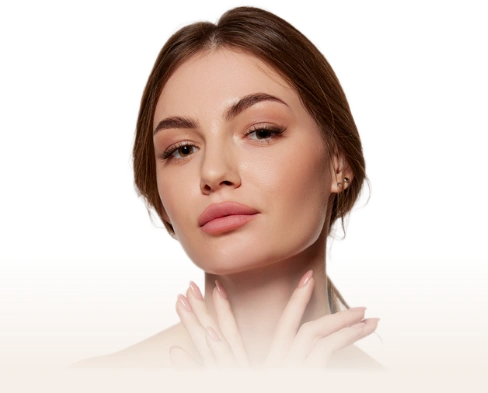On the outer corners of your eyes, you might notice wrinkled lines as you age. These are Lateral Canthal lines, also popularly known as “Laugh Lines” or “Crow’s Feet.” While these wrinkles might appear unpleasant, they are nothing to worry about, considering how commonly they occur. They can be treated easily by opting for the best fillers for crow’s feet at Syra Aesthetics.
Small muscles at the corner of your eyes contract as you experience emotions that lead to facial expressions such as laughter, tension, despair, sadness, and more, which cause these wrinkles to appear. They typically appear more prominently when you smile, and your eyes naturally squint. If left untreated, crow’s feet on the face may appear prominently even when you’re not smiling.
Collagen and elastin – two proteins that maintain the skin’s plump and youthful look naturally decrease with age. You start to get fine lines like crow’s feet and frown lines as these proteins to begin to diminish. Crow’s feet can be prevented or delayed by using sunscreens and facial moisturizers – however, getting rid of crow’s feet can be done with top fillers for crow’s feet.
What Causes Crow’s Feet?
What are crow’s feet causes, and how can I get rid of them? – These are the most common inquiries from people experiencing wrinkles as they age.
Apart from how aging affects your skin, various other factors can influence your skin’s aging process and the consequent occurrence of crow’s feet.
These factors are inclusive of the following:
- Repeated squinting, smiling, and other facial expressions
- Sun exposure
- Smoking
- Hormonal changes due to aging
- Nutrition
- Heredity
- Excessive use of sunscreen
The most significant muscle surrounding our eyes, Ocular Orbis, repeatedly contracts when we smile, squint, or make any other facial expression that involves this muscle; this repeated contraction causes crow’s feet on the face.
Frequent and continuous sun exposure is another factor that leads to the formation of crow’s feet on the face, as UV rays harm the skin by depleting essential components of our skin such as collagen and elastin. Once this happens, facial expressions cause the skin to wrinkle more easily.
Smoking also causes the skin’s collagen and elastin to break down, resulting in the development of crow’s feet on the face. Smoking also lowers blood flow, depriving the skin of the nutrients and oxygen it requires to remain healthy.
Since decreased estrogen levels also result in the depletion of collagen and elastin, hormonal changes such as menopause also lead to declined skin quality and elasticity. As a result, if you start to get crow’s feet on the face early in life—they can appear as early as in your thirties—they will probably get much worse after menopause as your estrogen levels fall.
How to Reduce the Appearance of Crow’s Feet?
If you’ve already developed crow’s feet on the face and want to minimize their appearance, there are non-invasive cosmetic procedures, such as fillers for crow’s feet. Being the most effective and safest of all other options, fillers for crow’s feet is the most popularly chosen treatment – however, there are other options available as well:
– Initial Injectable Fillers
You’ve probably heard of some of the most well-known injectable crow’s feet fillers, like Botox, Juvederm, and Restylane. They are secure injections that temporarily stop the aging process of the skin. Depending on the filler of your choice, effects might be visible shortly after treatment and persist for up to a year.
– Rejuvenation of the Face
The process of face rejuvenation involves taking fat from other places in your body and putting it back into your wrinkles. The youthful appearance can last several years, and the procedure needs general anesthesia.
– Vampire Facelifts
Since Platelet-Rich-Plasma is used during vampire facials, the procedure has earned its name (PRP). The process uses a common and effective technique called Micro-needling to create tiny holes in the skin so that PRP can be applied over the skin. While this procedure that involves using your blood over your face might sound strange – it is neither painful nor uncomfortable in any way and delivers the desired outcome.
Top 3 Fillers For Crow’s Feet
Maintaining a youthful, wrinkle-free face keeps getting difficult as we age. The creases on the face deepen and become more noticeable with time, primarily due to the inevitable use of facial muscles for expressions – this makes it one of the most commonly occurring cosmetic concerns, making fillers for crow’s feet the most opted-for treatment:
- Juvederm
- Dysport
- Botox
– BOTOX
Botulinum toxin, also known as Botox, is a neurotoxin used to cure wrinkles and creases. It effectively reduces the formed creases around the eyes by medically paralyzing the muscles underneath. Botox blocks the nerve signals that cause such muscles to contract. Full anti-aging results typically take up to two weeks to appear. The effects may remain for three to four months.
– JUVÉDERM
Hyaluronic acid, part of Juvéderm, helps your skin retain water. This makes it ideal for addressing lines around your eyes, such as appearing crow’s feet when smiling. Juvéderm treats crow’s feet by adding volume and erasing wrinkles and folds in the affected area. It takes approximately 14 days to notice the full effects, much like Botox. Then, you can anticipate that the anti-aging effects will continue for 12 to 18 months.
– DYSPORT
A cosmetic filler called Dysport works to lessen wrinkles around the eyes. Crow’s feet and other fine facial wrinkles are effectively treated. It differs from other fillers because of how rapidly it acts. Most people experience results four days after starting treatment. Additionally, it has a lasting impact (3-4 months).
– Disclaimer –
This blog is for informational & educational purposes only and does not intend to substitute any professional medical advice or consultation.
For any symptoms or medical advice, please consult with your physician, Or Book an appointment with our certified aestheticians at Syra Aesthetics.

About The Author
Dr. Syra Hanif M.D.
Board Certified Primary Care Physician
Dr. Hanif is the Director of Aesthetic Medicine. She is a board-certified physician in Aesthetic Medicine who specializes in using non-surgical alternatives in order to enhance one's appearance through Botox and fillers.
Read More











